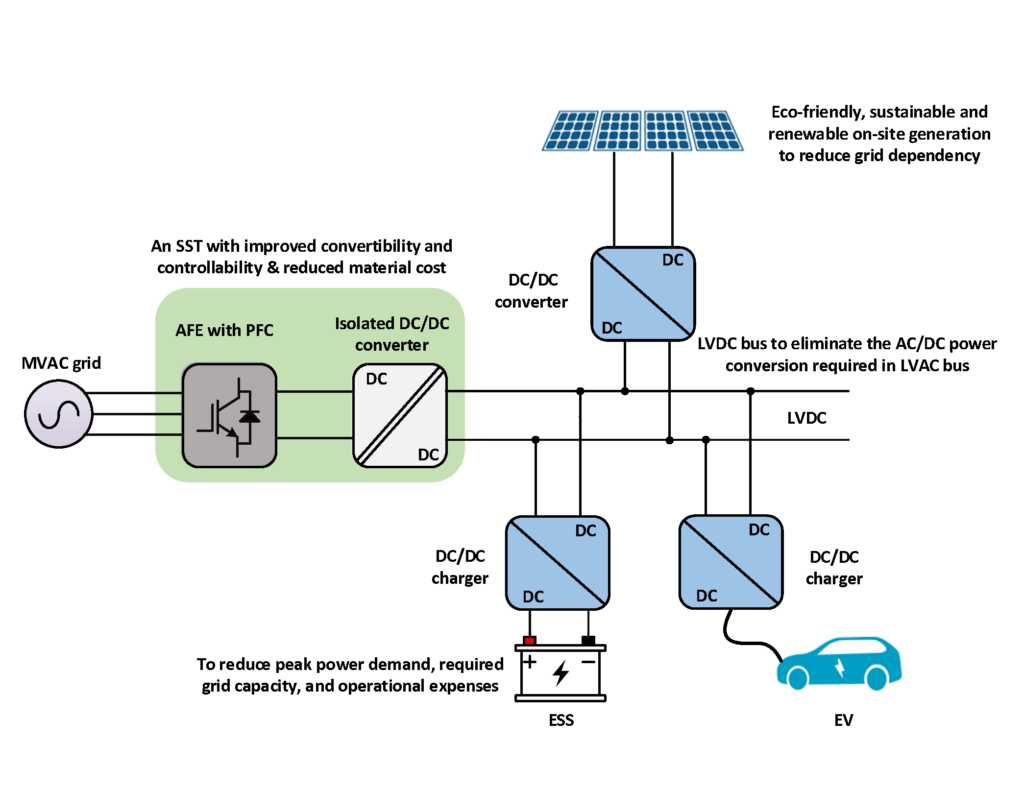An Overview on Medium Voltage Grid Integration of Ultra-Fast Charging Stations: Current Status and Future Trends
Authors: Adnan Ahmad, Zian Qin, Thiwanka Wijekoon and Pavol Bauer
Extended Abstract:
The shift towards electric mobility was initiated due to the emphasis on clean and green technologies and the curtailment of greenhouse gas emissions. As on-road electric vehicles (EVs) have grown exponentially over the last decade, so have the charging demands. The low-voltage (LV) distribution network primarily designed for residential power supply is being utilized to provide EV charging facilities. Besides increasing the distribution network’s complexity and dynamics, it will also challenge its operational capabilities, and large-scale upgrades will be required to meet the inevitably increasing charging demands. Contrastively, an ultra-fast (UF) charging infrastructure with dedicated medium voltage (MV) grid connections (feeders) replicating the gasoline refuelling infrastructure can facilitate a seamless transition to EVs and ensure the smooth operation of the power system. This paper reviews state-of-the-art DC fast chargers, the charging infrastructure’s current status, motivation, and challenges for MV UF charging stations (UFCS). Furthermore, we consider the possible UFCS architectures and suitable power electronics topologies for UF charging applications. A state-of-the-art UFCS requires an MV grid connection, and the incoming voltage is step-down either by an MV/LV LFT or an SST to the operating voltage of a UF charger. The bus bar of a UFCS to accommodate multiple UF chargers, local RESs, and ESSs may be designed as a standard AC or DC bus. An SST performs the MV/LV transformation like an LFT through AC/DC, DC/DC, and DC/AC conversion stages while providing the required isolation but with improved convertibility and controllability. As an emerging technology, SST can influence various areas, such as the smart grid, UFCSs, RES-penetrated power systems, etc. SST poses some of the expected benefits over LFT that include voltage and frequency support services quickly and efficiently as compared to tap-changing of LFT, power quality improvement, fault current limitation and fault isolation, power flow control, and better THD performance. The benefits of line frequency transformer (LFT) replacement with a solid-state transformer (SST), SST models, SST-based UF chargers, and MV SST-based UFCS architectures, as well as related MV active front-end and back-end power electronics topologies, are presented. To address the peak formation issues in the daily load profile and high operational expenses of UFCSs, integrating renewable energy sources and energy storage systems due to their technological and economic benefits is being considered. Finally, the application of microgrids’ hierarchical control architecture is considered for chargers and system-level control and management of UFCSs.

